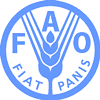 |
|||||||||
|
|||||||||||||||||||
|
|
New FAO Food Price Database Launched Interactive internet tool covers 55 countries - shows food prices locally have yet to fall.
As part of its response to high food prices, FAO has developed an interactive database of staple food prices on national markets in 55 developing countries from Afghanistan to Zimbabwe. The “National Basic Food Prices Data and Analysis Tool” shows the prices of different food commodities in local currencies or dollars and local measurements as well as standard weights. It allows for price comparisons between domestic and international markets, between different markets in the same country, as well as between countries. Price fall less in poor countries “While food prices have fallen internationally, as indicated by the FAO food price index, this tool shows that in developing countries they have not fallen so fast, or at all,” said Liliana Balbi, a senior economist with FAO’s Global Information and Early Warning System. “The easy-to-use database will be an invaluable source of information for policy and decision-makers in agricultural production and trade, development and also humanitarian work.” Food price inflation hits the poor hardest, as the share of food in their total expenditures is much higher than that of wealthier populations. Food represents about 10-20 percent of consumer spending in industrialised nations, but as much as 60-80 percent in developing countries, many of which are net-food-importers. Currently 963 million people or around 15 percent of the world’s population are suffering from hunger and malnutrition. The new analysis tool has benefited from a financial contribution from Spain under the FAO Initiative on Soaring Food Prices. FAO plans to add new countries and series to the database, resources permitting.
|
||||||||||||||||||

|
|||||||||||||||||||
| home | agri-services | pedigree
pen | news | dairy | beef | machinery quota | property | organisations | site map |
|||||||||||||||||||

